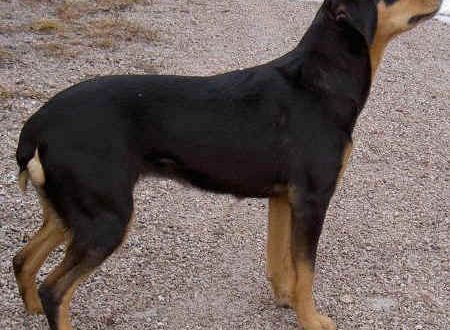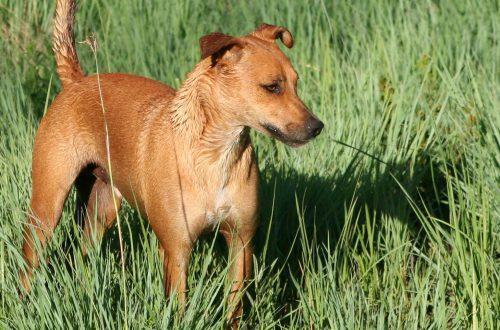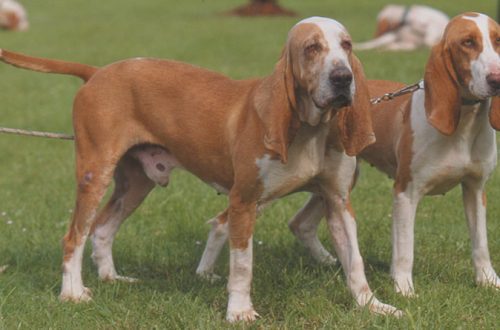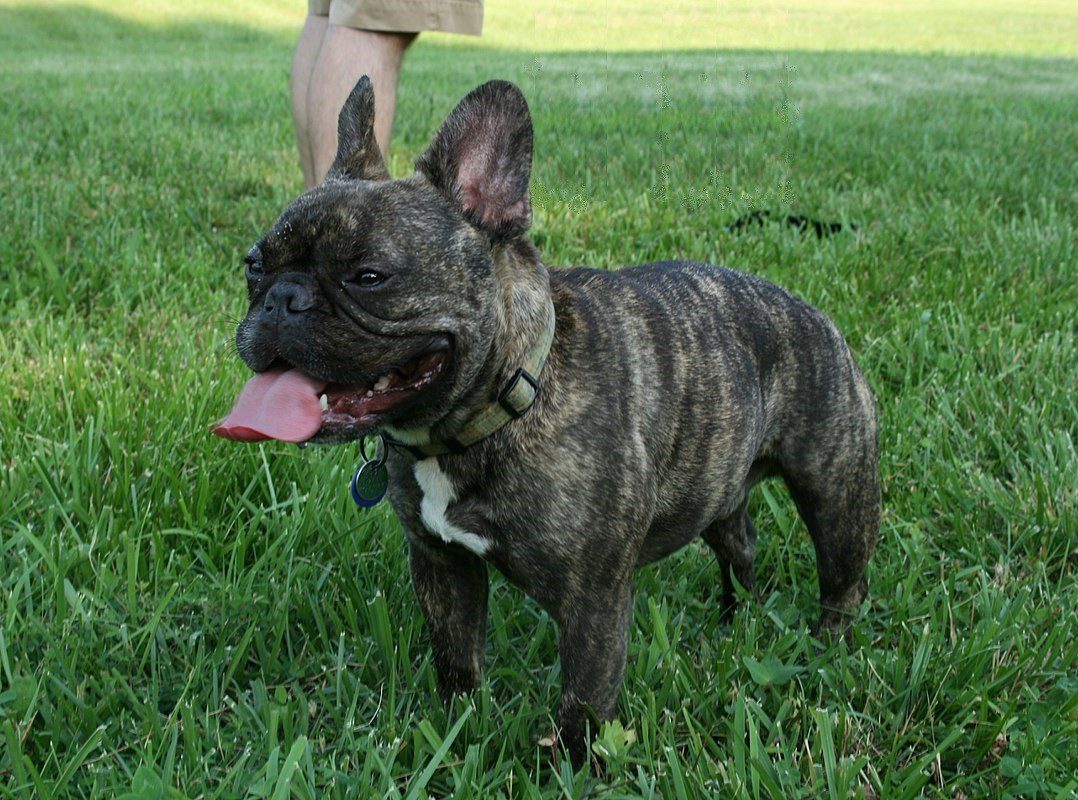
French Bulldog
The French Bulldog is a small companion dog with a good-natured disposition. The pet needs constant communication with family members.
Contents
- Characteristics of French Bulldog
- Basic moments
- History of the French Bulldog Breed
- Video: French Bulldog
- Appearance of French Bulldogs
- Photo of french bulldog
- The nature and habits of the French bulldog
- Education and training
- Care and maintenance
- Nutrition Features
- Health and disease of the French Bulldog
- How to choose a puppy
- Photo of french bulldog puppies
- How much does a french bulldog cost
Characteristics of French Bulldog
| Country of origin | France |
| The size | small |
| Growth | 28–30 cm |
| Weight | 11–13 kg |
| Age | 10–12 years old |
| FCI breed group | companion dogs |
Basic moments
- These dogs are smart, but stubborn, they quickly get bored with the routine. The trainer will have to show ingenuity and patience.
- Pets do not need high physical activity. Enough regular walks and weight control.
- Representatives of the breed do not tolerate heat well, it is recommended that they be kept in an air-conditioned room.
- French Bulldogs make little noise, rarely bark, although there are exceptions.
- These dogs are not suitable for lovers of perfect cleanliness: they drool, are prone to flatulence, and shed.
- The French Bulldog breed is only suitable for keeping in the house – they are not physically adapted to life on the street.
- A companion dog needs a lot of human interaction. If no one is at home for a long time, the dog may grow aggressive or get sick.
- The French Bulldog will get along well with the child, but it is better not to leave very young children with a pet without adult supervision – the baby can accidentally offend the dog, forcing it to defend itself.
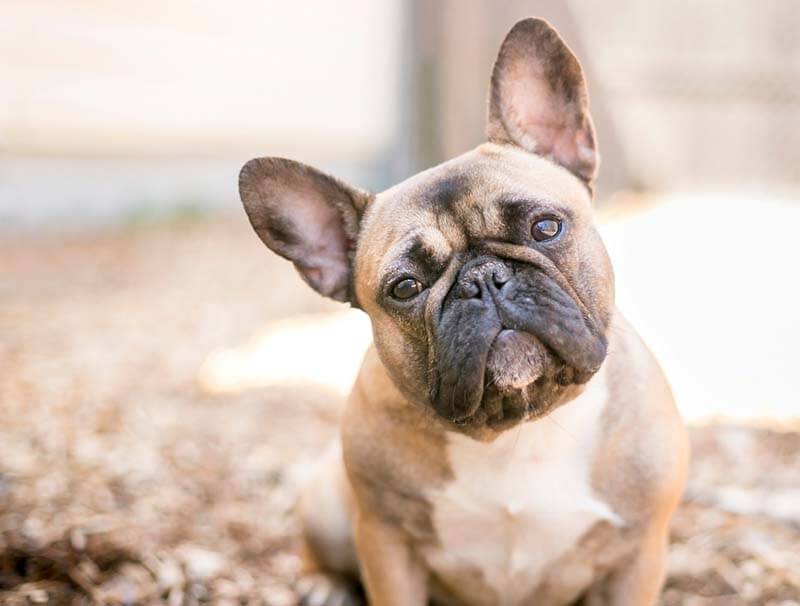
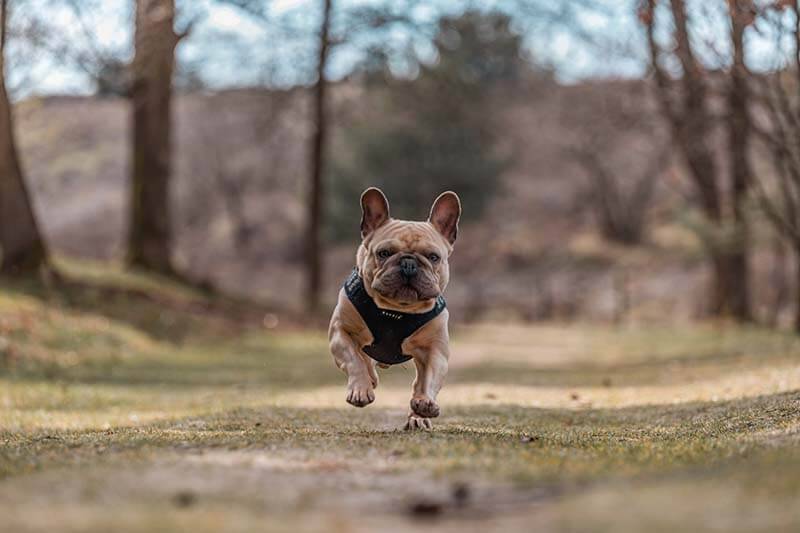
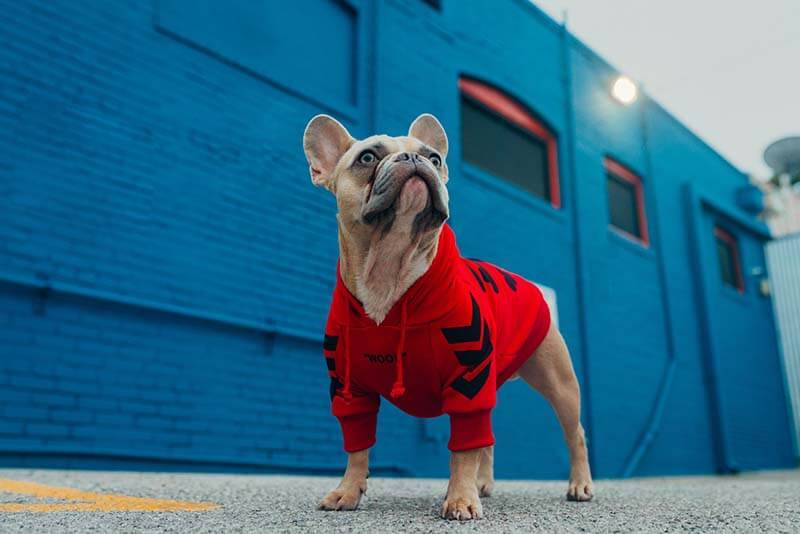
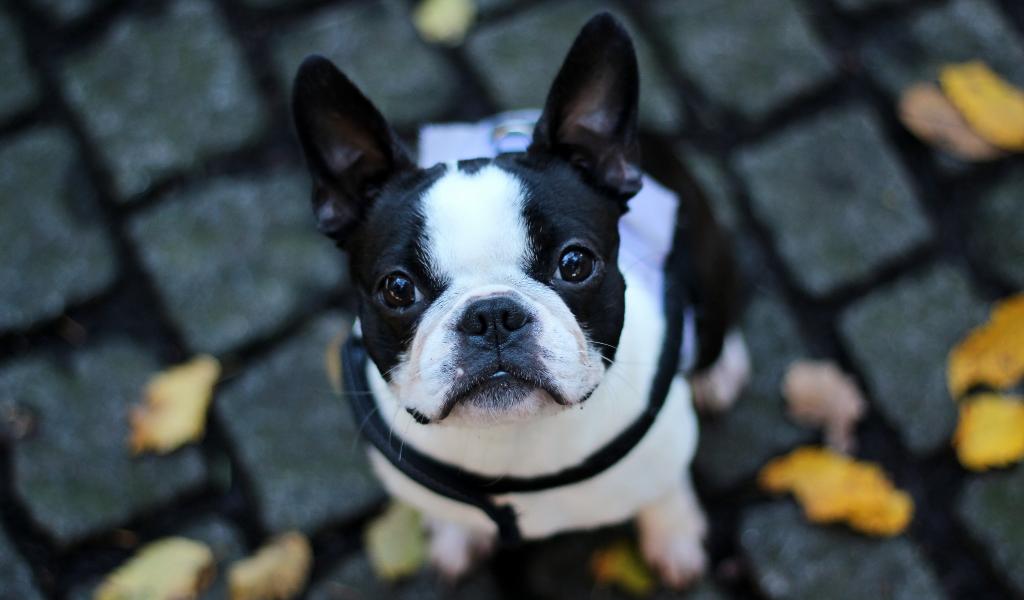
The French Bulldog is a friendly companion dog that gets along easily with other non-aggressive pets and family members. The breed is perfect for living in a city apartment, does not require complex care. These animals are decorative dogs, although their ancestors were fighting dogs. Pets are very devoted and quick-witted, they are distinguished by good health.
History of the French Bulldog Breed
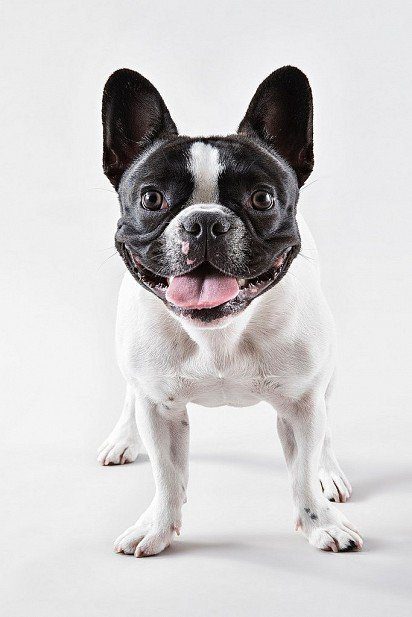
French Bulldogs, despite the name, were bred in England. In the 19th century, breeders decided to create a breed of companion dog that could easily be kept in urban conditions. Craftsmen, seamstresses, lacemakers did not miss the opportunity to acquire a mischievous pet, which pleased the owners with a light disposition and funny habits. To breed such a dog, breeders selected the smallest English bulldogs, crossed them with terriers, pugs . This is how the modern breed appeared.
In the second half of the 19th century, the demand for manual labor greatly decreased due to the rapid development of manufactories. Many English workers moved to France, taking their beloved dogs with them. According to another version, bulldogs were brought here by traders. Good-natured character, ability to catch small rodents and unusually large erect ears instantly attracted the attention of the French public to this breed.
In Paris, courtesans became the first owners, or rather owners, of small bulldogs. There are many photo postcards with naked or semi-naked women posing with their pets. Very quickly, the fashion for these dogs spread in high society, as evidenced by numerous photographs. Since the 80s of the XIX century, a real boom in the popularity of the breed began. At this time, Paris was already the fashion capital of the world, so the whole world soon learned about French bulldogs. In 1890, dogs were brought to the USA, and 7 years later the FBDCA (French Bulldog Club of America) was established.
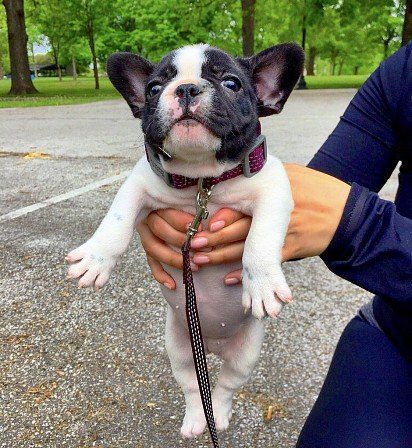
French Bulldogs made their public debut at an English show in 1896, where they won the admiration of many breeders. Breeders are interested in breeding these dogs. The popularity of the breed grew rapidly, and in 1913 about a hundred French Bulldogs arrived at the Westminster show. Initially, these dogs were called Bouledogue Francais, but at the beginning of the 20th century the name was changed to French Bulldog. The Kennel Club in 1905 recognized the breed as an independent breed, separating it from the English Bulldogs.
In the 20s of the twentieth century, these cute pets came to the territory of Russia, but since puppies were very expensive, only representatives of the nobility and simply rich people could afford a French bulldog. Fedor Chaliapin was one of the most famous fans of French Bulldogs. Over time, the popularity of these dogs declined, but they still managed to take the 21st place in the popularity rating among 167 breeds registered by the AKC.
There is a beautiful legend that a French bulldog named Gamin de Pycombe, being the pet of one of the passengers of the Titanic, managed to escape from a shipwreck and even find a new owner. However, this is only half the truth – archival records confirm the presence of a bulldog on board, but he failed to survive. Since the dog was insured, its owner received an impressive compensation – more than 20 thousand dollars. Another representative of the breed, which went down in history under sad circumstances, was Ortipo, the favorite of Princess Tatyana Nikolaevna (daughter of Nicholas II). The dog died along with the mistress during the execution of the royal family.
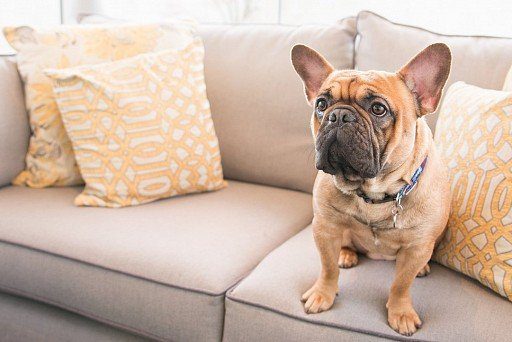
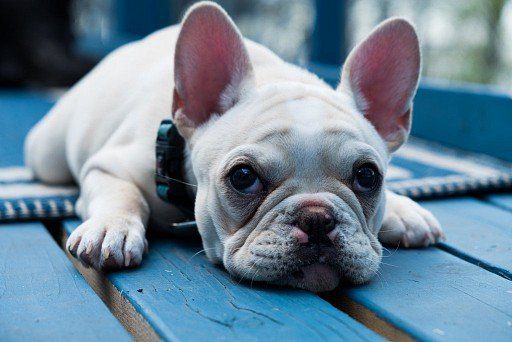
Video: French Bulldog
Appearance of French Bulldogs
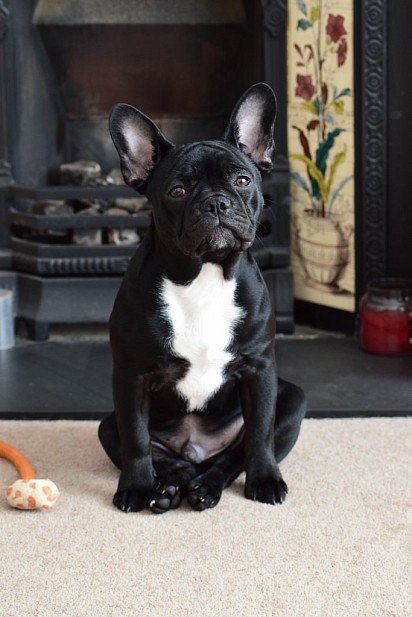

The standard for French Bulldogs had been developed by the time they started showing. The main criteria allow you to select the best representatives of the breed: healthy, suitable for show and breeding.
Dimensions
They are small, compact dogs. Adult males weigh about 10-15 kg, females – 8-12 kg. The height at the withers is not officially limited by the standard, but usually it does not exceed 25-35 cm.
Wool
The coat of the French Bulldogs is smooth, shiny and thin, the cover fits well to the body and does not have an undercoat, so it is worth warming the dog for walking in cold weather.
torso
The French Bulldog has a strong, square build. The back and hind legs are muscular and strong.
front legs
The forelimbs are somewhat shorter than the hind legs, which visually makes the dog slightly stooped. Because of this feature, pets like to lie in a funny position – stretching their hind legs back. The weighted body and short legs do not allow the French Bulldog to swim (it can stay upright on the water and gets tired quickly).
Head
Wide and square, so the representatives of the breed are inherent in undershot. Some puppies are born with an elongated or cleft soft palate.
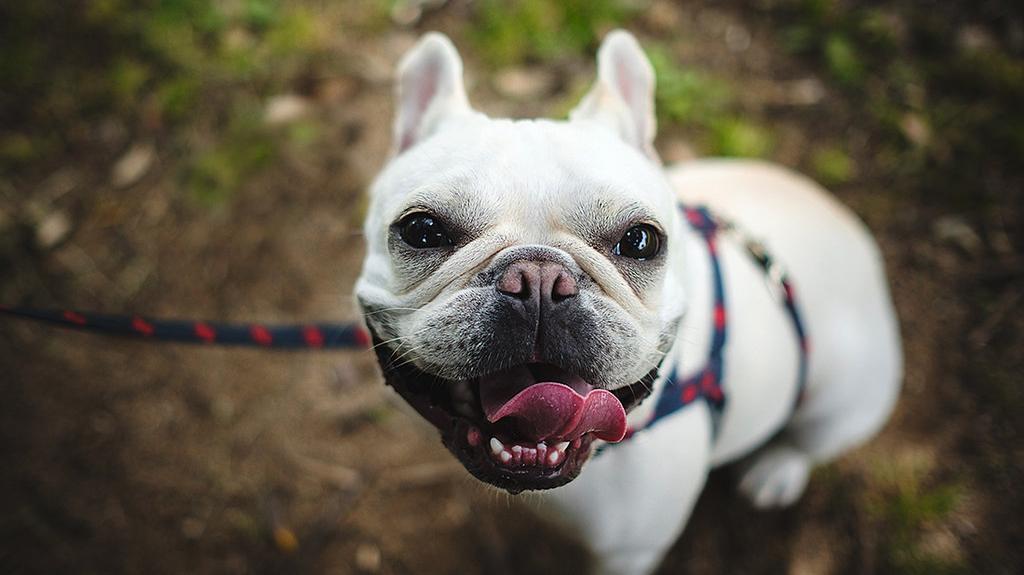

Muzzle
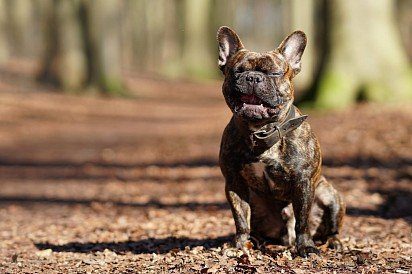

On the forehead there are wrinkles characteristic of the breed, passing closer to the middle into symmetrical concentric folds, the muzzle is short. A small nose is flattened and turned up. The forehead has a convex profile, the neck is covered with folds. The eyes are large, round with a benevolent expression. Breathing is difficult, accompanied by sounds similar to grunting.
Ears
The organs of hearing are large, erect, rounded at the ends.
Color options
Fawn, white, black, brindle, spotted, beige, white-brindle, blue (not recognized by all associations), cream.
Photo of french bulldog
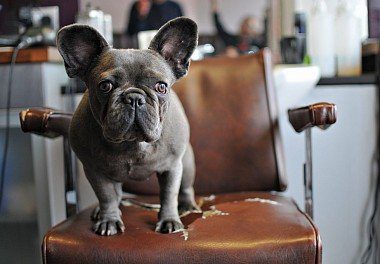

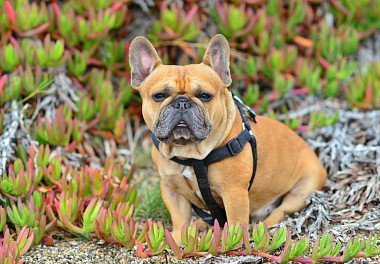

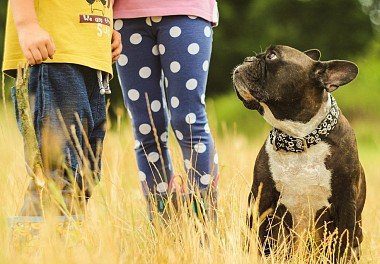

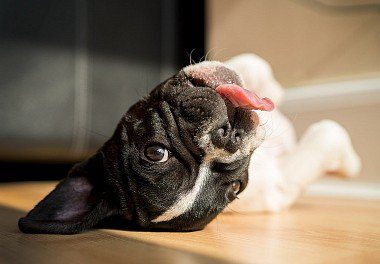

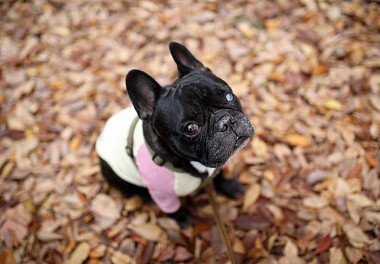

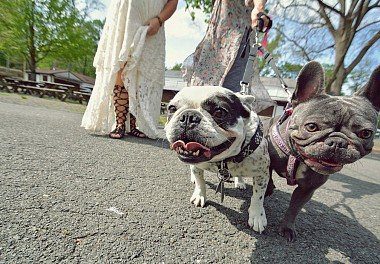

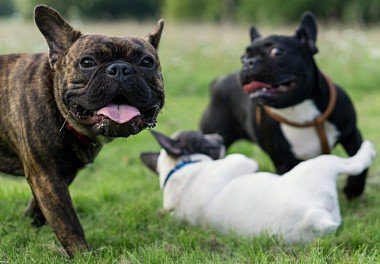

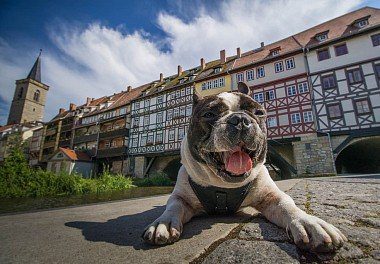

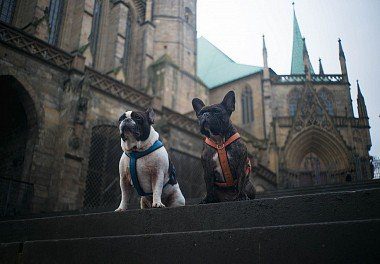

The nature and habits of the French bulldog
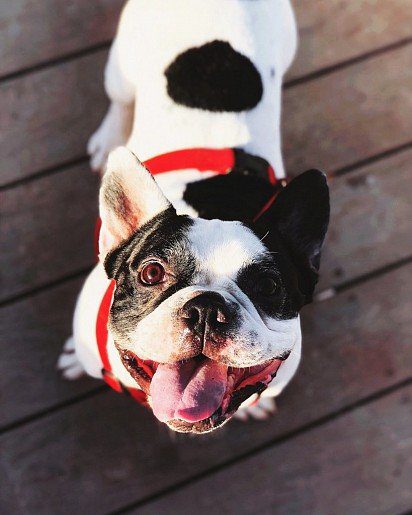

Dogs of this breed are great for family living. Lovely temperament, playfulness and friendliness are what have always made French Bulldogs so popular. Pets are very fond of all family members, big and small. At a young age, it is an active and temperamental dog, with time it becomes slower and more imposing. The French Bulldog craves constant owner attention, active play and affection, so it is not recommended for older or overly busy people to start it.
The cheerful nature, the ability to do without long walks and ease of care make the pet a good option for inexperienced dog breeders. Such a companion will be happy to entertain family members and guests, brightening up even the most gloomy day. The French Bulldog feels the mood well, so if the owner feels bad, he will try to please him or just sit next to him. Despite its compact size, the dog is ready to stand up for himself and his owner in the event of a threat from other people or animals.
Dogs of this breed do not like to be left alone for a long time. The animal begins to yearn and misbehave, the constant feeling of loneliness can make him more aggressive, wayward. The French Bulldog gets along well with other pets as long as they don’t make him defensive. But on the street, the Frenchman often conflicts with unfamiliar dogs and cats, so much attention should be paid to training and socialization.
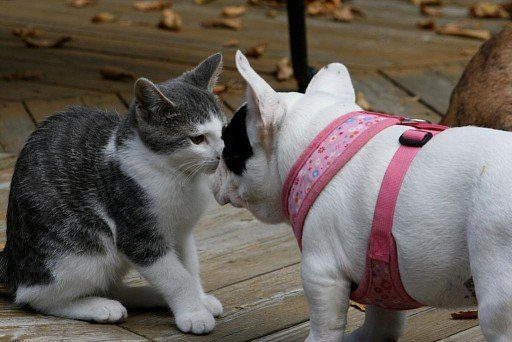

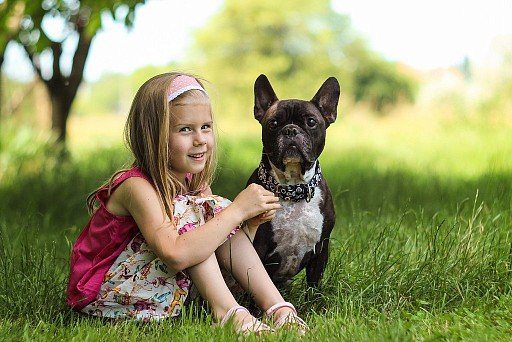

Education and training
French Bulldogs are not easy to train because they are naturally stubborn and get bored with repetitive activities quickly. Experienced experts advise to always use treats for encouragement, using short training cycles. Particularly stubborn representatives of the breed can be trained by building the training process in the form of a game. It is advisable to take a UGS course from a professional cynologist.
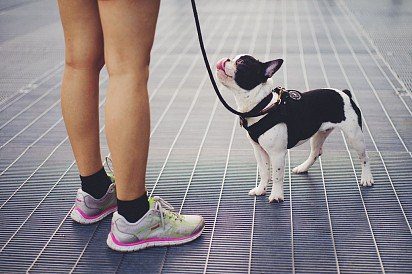

French Bulldogs are sentimental and have a good memory. In order for the puppy to quickly adapt to the new home, ask the breeder for a toy or thing that is already familiar to the baby. Education should begin from the very first day, despite the tender age of a four-legged friend. Don’t be charmed by pretty eyes – calmly but firmly establish your own leadership. Otherwise, it will be extremely difficult to cope with the dog in the future – adults practically do not change their character throughout their lives. Immediately show the dog the tray (toilet), the place where his bowl is located, the area for games and relaxation. The kid can be taught the commands “Come to me”, “No” and “Fu” quite quickly. These are the basic commands that will help you communicate with your dog, even if you don’t intend to train him in any special way.
Until about 8 months old, the puppy will actively test the owner for strength, trying to gain leadership. Strictly suppress hooliganism and aggression, but never beat the dog, give up screaming, profanity. An authoritative voice is enough for punishment. If the puppy does everything right, do not forget to praise him, surround the pet with care – this will speed up the learning process and prevent anger. Soon the dog will finally come to terms with the main role of a person, becoming a devoted friend.
The worldview and character are fully formed in the French Bulldog by the age of 16 weeks. Up to this point, it is important to socialize the pet as best as possible, teach commands, accustom to hygienic and cosmetic procedures.
Care and maintenance
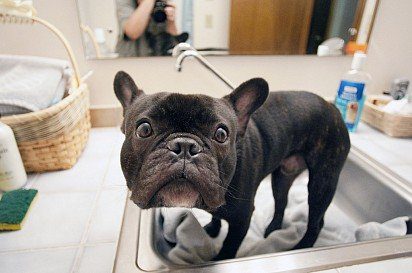

- 1-2 times a week comb your pet with a brush for short-haired animals or a special mitt. This will help to make a useful massage, remove dead hair, street dust.
- It is enough to bathe the animal with a special shampoo several times a year. After water procedures, dry the body well with a towel, you can use a hairdryer if the dog is not afraid of it.
- You need to brush your teeth with a specialized paste about 1 time per week. This procedure can be replaced by buying a French bulldog special bones that help remove plaque and tartar.
- Regularly monitor the ears – due to their anatomical structure, sulfur accumulates little, but dirt and insects get in easily. Clean them once a week with a cotton swab or swab. Remember that there should be no liquid in the ears, a sharp unpleasant odor.
- It is enough to cut the nails once a month, smoothing the tips with a nail file. Carry out the procedure carefully so as not to hook the capillaries.
- Keep an eye on the skin folds on the face – particles of food and pollution often get there. It is necessary to wipe them once a day with a soft, damp cloth, to prevent the formation of diaper rash.
- Bulldogs of a light color have a small amount of discharge from the eyes. This is normal, but it is advisable to carefully remove all contamination. If there is increased tearing, clouding of the eyes, contact your veterinarian immediately – an infection or allergy is possible.
- The French Bulldog breed is not demanding on the conditions of physical activity – in a spacious apartment, a dog can live with little or no walking. This greatly simplifies its maintenance in urban conditions. But the less the pet moves, the more carefully the menu should be drawn up.
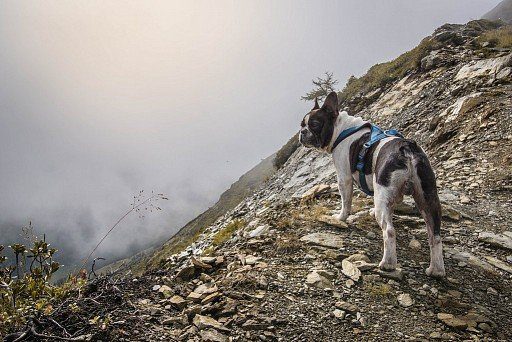

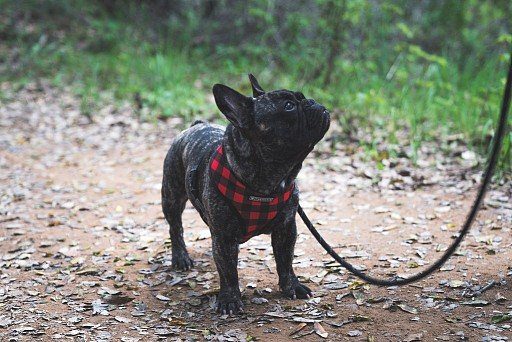

Nutrition Features
French Bulldogs require careful diet selection, as they are prone to gastrointestinal problems, food allergies, and obesity. Choose quality ready-made dry food only holistic and super-premium. Buy a bowl with a height-adjustable vertical stand for your pet, provide access at the level of the dog’s chest. This will make drinking and eating more convenient. Change the water every day, remove the leftover food immediately.
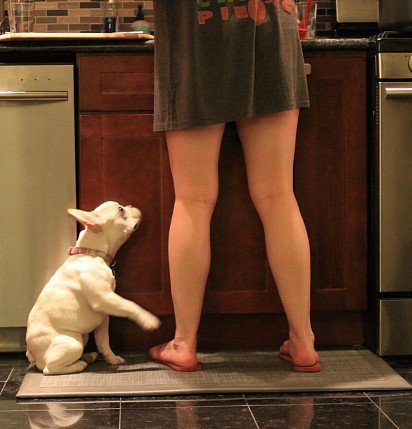

If you are planning natural feeding, stick to the list of recommended products:
- raw lean meat, cut into pieces;
- boiled sea fish without bones;
- cereals;
- seasonal vegetables and fruits (primarily green);
- chicken eggs;
- dairy products (causes diarrhea in some dogs).
Completely exclude fatty meat, river fish, smoked meats, sweets, bakery products, gas-forming foods (beans, cabbage) from the dog’s diet. Puppies up to 2 months are fed 6 times a day, at 3 months – 5 times a day, at 4-7 months – 4 times, at 8-12 months – 3 times. In a year, you can switch to two meals a day. Control your portion sizes as French Bulldogs tend to overeat. Do not give very hot or cold food/drinks.
Health and disease of the French Bulldog
The life expectancy of dogs of this breed with proper care is 10-13 years. Some individuals reach the age of 14 years or more, but this is rare. In general, French Bulldogs are reasonably healthy, although there are several common diseases.
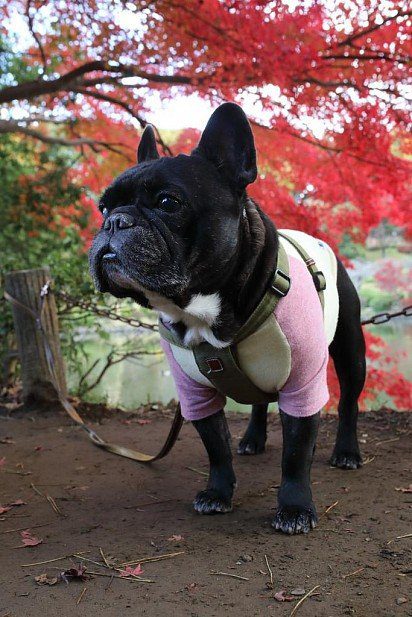

- Skin – if left untreated, dermatitis can develop in the skin folds of the muzzle or between the fingers.
- Eyes – dogs are prone to conjunctivitis, blepharitis, glaucoma, cataracts. Sometimes there is such an anomaly as the third eyelid.
- Back – Many pets suffer from problems with intervertebral discs. This is due to the fact that the breed was bred with the help of the smallest representatives of the English Bulldogs, which can hardly be called a standard of health.
- Reproductive system – anatomical features complicate natural insemination and childbirth. Most puppies are born by caesarean section.
- Thermoregulation – a flattened muzzle negatively affects heat transfer. Dogs are equally sensitive to heat and cold. Some airlines do not allow these animals to be transported because they often die in transit.
- Breathing – Even when awake, French Bulldogs emit a slight grunt, but at night it can turn into a powerful snore. Obese animals are especially susceptible to this.
- Allergies – most often, pets are prone to food reactions.
How to choose a puppy
If you are considering buying a French Bulldog puppy, take the time to find a reliable kennel that has been verified by a large number of buyers. This is the only way you can buy a dog:
- thoroughbred;
- without serious genetic defects;
- vaccinated;
- with a stable psyche (not shy, not aggressive).
Additionally, the new owner receives a puppy card, pedigree and vaccination book. Pay attention to the habits of the future pet. It should be moderately well-fed puppy, active, courageous, playful. Ears, eyes should be clean, hair without bald spots. It is recommended to take a baby from the age of 8, even better 10-12 weeks. Be sure to ask about the nature and habits of the parents – many traits are transmitted genetically.
Photo of french bulldog puppies
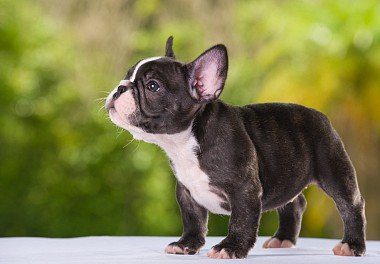

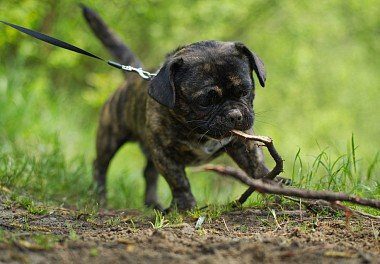

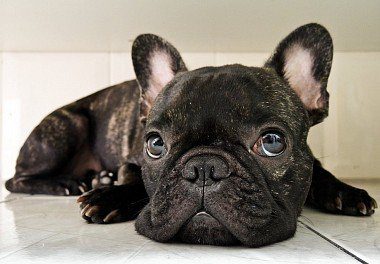

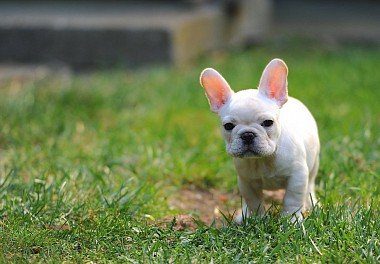

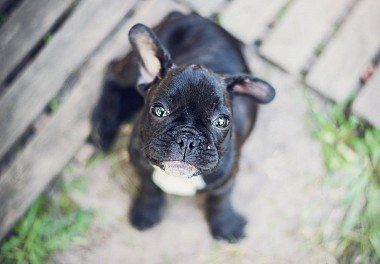

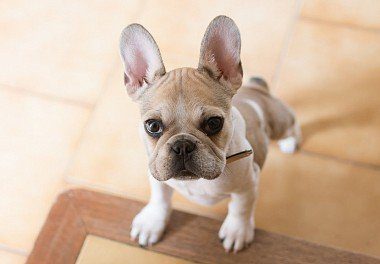

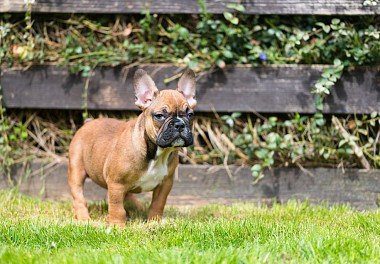

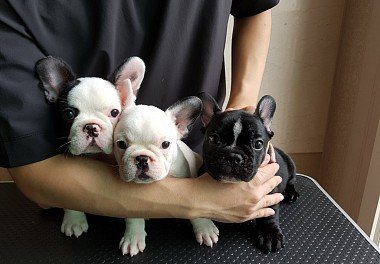

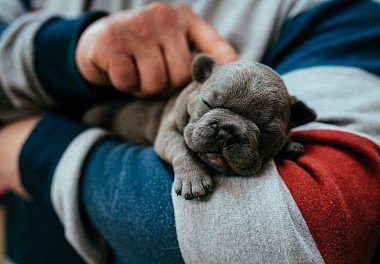

How much does a french bulldog cost
The price of a French Bulldog largely depends on the pedigree. The average cost of a puppy ranges from 350-1200$. Show pets can be even more expensive. Remember that it is better to overpay for a healthy well-bred puppy than to treat a dog for a long and expensive time and correct its behavior later.





